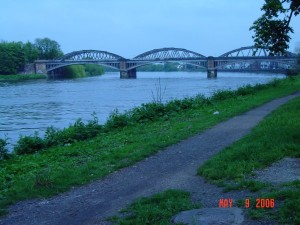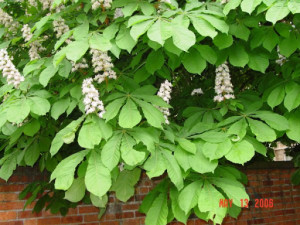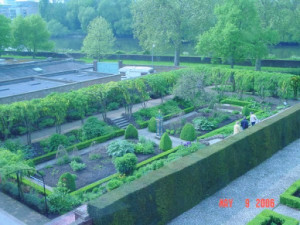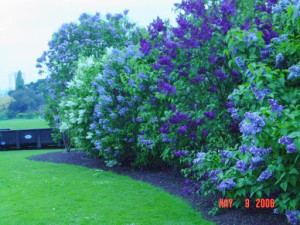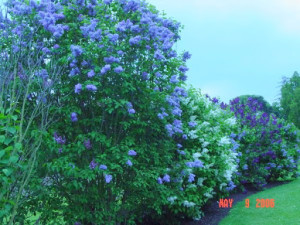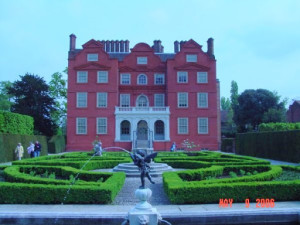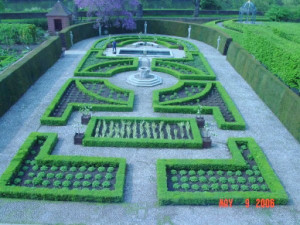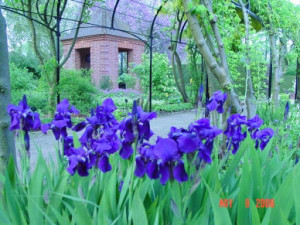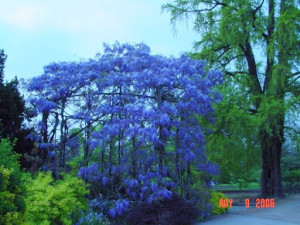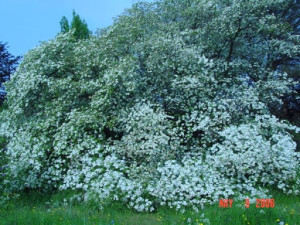Kew Gardens:
An Academic Pursuit Goes Pleasurable in London
(I crossed the Rover Thames on picturesque Barnes Bridge by train to get to Kew Botanical Gardens)
I arrived at Kew Botanical Gardens purely by chance. The bucolic village of Barnes covered, I walked back to Barnes Bridge train station to wind on along the Thames to Kew. I had, in fact, intended to visit Syon House and Park, a massive country estate built by Robert Adams on the river; but I had discovered just in time that it was closed on Tuesdays.
So Kew Botanical Gardens it was instead. The weather could not have cooperated better. Already having walked a couple of miles that morning, my feet had begun to protest but I pressed on, crossing Kew Bridge on foot and arriving at the hamlet of Kingston-Upon-Thames. Though I could have walked right into Kew’s main gates, I opted instead to take the Tow Path that bordered the Thames where a very friendly English lady walking her dog, Darcy, kept me company.
As we marched by the river banks, joyous birds sang lustily in the towering horse chestnuts that were in full bloom, presenting their spectacular white candle-like flowers for all the world to see. Also appearing in pink, though rarer, these flowering chestnut trees made such a marvelous sight throughout my spring stay in England. Since a “Chestnut Blight” destroyed every signle chestnut tree in the United States in the 1930s, I don’t believe I have ever seen a chestnut tree in bloom in spring in the USA–it takes at least a century for the trees to grow to their fullest height ands glory.
It was at least a mile’s walk before I reached the Brentford Gate at Kew Gardens and purchased a ticket for 16 pounds which included entry into London’s newest royal attraction, Kew Palace. But hunger pangs were rather insistent by this point and in the lovely white Victorian Orangery, I found sustenance in the form of ham and cheese sandwiches.
(Lilac blooms in various shades of blue filled the flower beds on that spring morning)
Kew’s vastness is unfathomable and there was no way I could even scratch the surface, having already done a great deal of walking that day. My camera worked overtime as I couldn’t resist taking pictures of the lilacs that were blossoming in white and every purple shade from the softest lavender to the deepest mauve. Spring also brings out carpets of wild bluebells all over England and there were plenty at Kew. I couldn’t linger through lunch as I had to get to the entrance of Kew Palace by 3pm, the time stamped on my ticket, since the number of visitors to the house is carefully regulated to prevent overcrowding.
Kew Palace (left) is the name given to the country home at Kew that was maintained and used by Mad King George III who is infamous both for his insanity (porphyria by today’s diagnosis) and for having lost the colonies in America. After his marriage to a German Princess named Charlotte, the couple converted Kew Palace into their summer home between the years 1800 and 1818. Together, they had 15 children and just one grandchild, little Charlotte (grandmother to Queen Victoria). The house lay in disuse for generations and has only very recently been restored, refurbished and opened to the public. In fact, renovation is still progressing on the topmost floor, but those that are open to the public are a wonderful indication of the contrast that made up the simple austerity of the father King George III and the rampant extravagance of his son Prince Regent George IV (yes, the same one who constructed the Royal Pavilion at Brighton).
In her memoirs, Queen Charlotte who loved her private garden (left) wrote very affectionately of her summers at Kew and as I roamed at leisure through the rooms, I imagined the happiness of this couple whose greatest joy lay in spending time with their children at Kew, playing cricket and croquet together on the front lawn and taking endless walks in the spectacular botanical gardens with their many ‘follies’ built in the form of pagodas, Grecian temples and mosques.
I lingered for a long while in the Queen’s Gardens just behind the Palace where tall blue irises (left) were striking in the midst of the herb beds and where bunches of yellow laburnum made graceful arched pergolas under which visitors strolled.
Though there was an Explorer mobile that could take visitors to the highlights of the park, I decided to discover a small part of Kew on my own two feet. In the Secluded Garden, close to the Princess of Wales Conservatory, I enjoyed the sight of some pretty unusual trees such as an African Monkey Tree, a gingko biloa (above left) and a giant dogwood (above right) that was in awesome bloom much to the delight of the English visitors who had no idea what the tree was and were so taken by its flowers. I informed them very proudly that dogwoods are native to North America and that I had one blooming even as we spoke in my garden in Connecticut!
I spent a delightful morning at Kew. Though I reached there by default, I will never forget the charming experience of strolling along the Tow Path of the Thames Canal to arrive at this earthy Paradise nor will I cease to remember the quiet hours I spent in the company of Nature.
